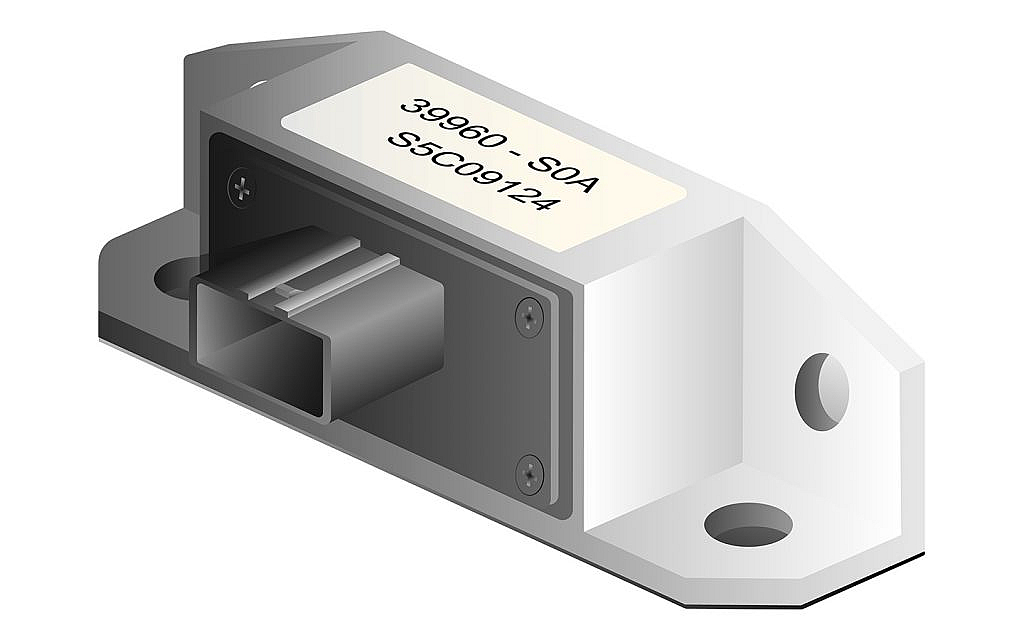Symptoms of a Bad Yaw Sensor: Warning Signs to Stay Alert For

The yaw rate sensor, an integral component of a vehicle’s safety systems, is responsible for detecting and measuring the vehicle’s rotational motion, or yaw. While it serves the crucial purpose of enhancing safety, like any other electrical equipment, it is susceptible to having problems occasionally. Recognising the symptoms of a bad yaw sensor is essential for maintaining optimal vehicle stability and safety.
Several indicators can point to a problematic yaw rate sensor, including irregular vehicle behaviour, unexpected stability control activations and check engine light coming on. Identifying these warning signs early on prevents potential accidents and ensures the timely repair or replacement of the sensor.
What is a Yaw Sensor

Before delving into the effects of a failed yaw sensor, let’s first understand its purpose. A yaw sensor, also known as a rotational speed sensor, measures a vehicle’s rotational movement, or yaw rate, around its vertical axis. It provides real-time data to the vehicle’s stability control systems, such as electronic stability control (ESC) or anti-lock braking systems (ABS), enabling them to make rapid adjustments to maintain stability and prevent skidding or loss of control.
The yaw rate sensor is an electrical component typically located either in the vehicle’s computer or near the fuse box under the dashboard. It is not prone to regular wear and tear. However, most issues with the sensor stem from problems with the individual sensors it monitors. When a yaw sensor fails, it can have significant consequences on a vehicle’s performance and safety.
Let’s explore what happens when a yaw rate sensor fails and its impact on driving dynamics.
Symptoms of a Bad Yaw Sensor
When the yaw rate sensor in a vehicle begins to fail or malfunctions, several symptoms can indicate a problem. Here are some common signs of a bad yaw rate sensor:
Check Engine Light Comes on

One of the initial indications of a failed yaw rate sensor is the illumination of the Check Engine light. However, it is important to note that there are several reasons why the check engine light turns on.
While the Check Engine light alone may not provide conclusive evidence of a yaw rate sensor problem, it serves as an initial warning that a problem. It becomes more likely that the yaw rate sensor is at fault when you observe the Check Engine light turning on simultaneously with other symptoms mentioned in this list.
Certain car makes and models equipped with advanced warning systems may display a specific message or code indicating a problem related to the yaw rate sensor.
Loss of Stability Control
When the yaw rate sensor fails, it can lead to the loss of stability control systems in the vehicle. These systems rely on accurate data about the vehicle’s rotational movement provided by the yaw rate sensor. If the sensor is not functioning correctly, the stability control systems cannot effectively intervene and correct any deviations from the intended path.
As a consequence, the vehicle becomes more susceptible to skidding or sliding during turns or sudden manoeuvres. The stability control systems cannot operate optimally without the correct input from the yaw rate sensor. This increases the risk of accidents or loss of control in challenging driving conditions.
Vehicle Stability or Traction Control Light
As mentioned previously, the yaw rate sensor is integral to the vehicle’s stability and traction control systems. If there is an issue with the yaw rate sensor, it can trigger the illumination of the vehicle’s stability.
While these car dashboard warning lights are not exclusive to problems with the yaw rate sensor, they serve as an initial indication that the issue lies within the stability or traction control system.
Therefore, when you observe the vehicle stability or traction control light turning on in conjunction with other symptoms, it suggests that there may be a problem specifically related to the yaw rate sensor and its impact on the stability or traction control functionality.
Impaired Traction Control

Yaw sensors are closely integrated with traction control systems, which optimise traction and prevent wheel slip. When a yaw sensor fails, the traction control system may not receive accurate data regarding the vehicle’s rotational motion. Consequently, it may be unable to apply the necessary brake force to individual wheels, leading to decreased traction and potentially compromising the vehicle’s ability to maintain a grip on slippery surfaces.
Increased Risk of Rollover
Yaw sensors are vital in rollover prevention systems. These systems utilise the sensor’s data to detect excessive body roll and adjust brake pressure on individual wheels to counteract it. In the absence of reliable yaw information, the vehicle’s rollover prevention systems may fail to detect and mitigate the risk of rollover, potentially putting the occupants’ safety at risk.
Altered ABS Functionality
The anti-lock braking system (ABS) relies on yaw sensor data to determine if a vehicle is in danger of skidding during braking. It is one of the signs of bad electronic stability control. However, by modulating brake pressure on individual wheels, the ABS ensures that the wheels maintain traction while braking. A yaw sensor failure can impair the ABS’s ability to accurately detect wheel slip and apply the appropriate brake force, leading to compromised braking performance and longer stopping distances.
Onboard Diagnostics Fault Codes
Furthermore, a malfunctioning yaw rate sensor will likely generate OBD2 fault codes in the vehicle’s onboard diagnostics system. These fault codes can be accessed and read using an OBD car scanner or reader, which allows you to check for any issues in your car’s systems.
With this, we end our list of symptoms of the bad yaw sensor. When a yaw sensor fails, it can have severe implications for a vehicle’s stability and traction control. If you suspect a yaw sensor failure, a qualified automotive technician must inspect and repair it promptly to ensure optimal vehicle safety and performance on the road.
If you are looking for a car with modern safety features, then browse through a variety of used cars for sale in the UAE here.
Stay tuned to the dubizzle’s cars blog for more updates.
Leave a Reply